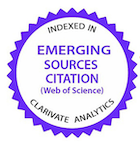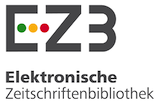EVALUATING THE EFFECTIVENESS OF PERMEATING AND NON-PERMEATING CRYOPROTECTANTS IN FAST AND SLOW DEFROSTING OF CANINE SEMEN
DOI:
https://doi.org/10.5216/cab.v15i1.26124Keywords:
Animal ReproductionAbstract
The aim of this study was to evaluate the association between cryoprotectants little studied in Brazil such as dimethylformamide and trehalose amid thinner, using protocols of fast and slow defrosting. Three adult Labrador Retrievier male, healthy dogs, weekly submitted to one semen collection during five-weeks period, were used. The base diluent medium used in this study was tris-citrate added with 3% of dimethylformamide + 3% glycerol (D1), 3% dimethylformamide and trehalose (D2) and 4% glycerol (D3). At defrosting, half of the semen samples from each diluent medium was defrosted by rapid method in water-bath at 75 °C for seven minutes, followed by a new immersion at 37 °C for 1 minute. The other half of the samples was defrosted by slow method, in water-bath at 37 °C for 1 minute. The semen was evaluated for sperm progressive motility and vigor, besides membrane integrity. For this, the semen samples were submitted to either hyposmotic and membrane integrity tests of the plasmatic membrane and acrosome (fluorescence). The results indicated that the use of glycerol as cryoprotector in TRIS diluter provides greater efficacy in cryopreserving spermatozoa of the canine species, when compared to dimethylformamide associated with trehalose or glycerol.
KEYWORDS: cryopreservation; dimethylformamide; dogs; glycerol; trehalose.
Downloads
Published
How to Cite
Issue
Section
License
Copyright (c) 2014 Brazilian Animal Science/ Ciência Animal Brasileira

This work is licensed under a Creative Commons Attribution 4.0 International License.
Authors who publish with this journal agree to the following terms:
- Authors retain copyright and grant the journal right of first publication with the work simultaneously licensed under a Creative Commons Attribution License that allows others to share the work with an acknowledgement of the work's authorship and initial publication in this journal.
- Authors are able to enter into separate, additional contractual arrangements for the non-exclusive distribution of the journal's published version of the work (e.g., post it to an institutional repository or publish it in a book), with an acknowledgement of its initial publication in this journal.
- Authors are permitted and encouraged to post their work online (e.g. in institutional repositories or on their website) prior to and during the submission process, as it can lead to productive exchanges, as well as earlier and greater citation of published work (See The Effect of Open Access).































